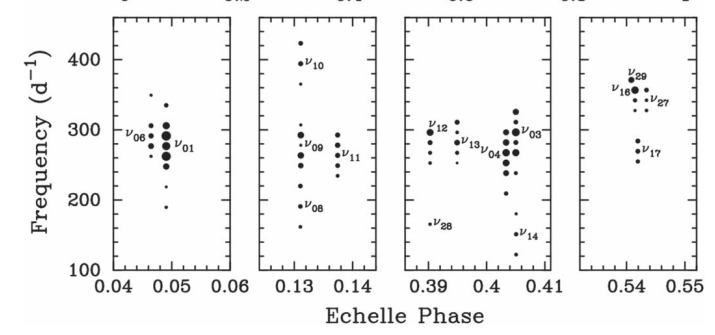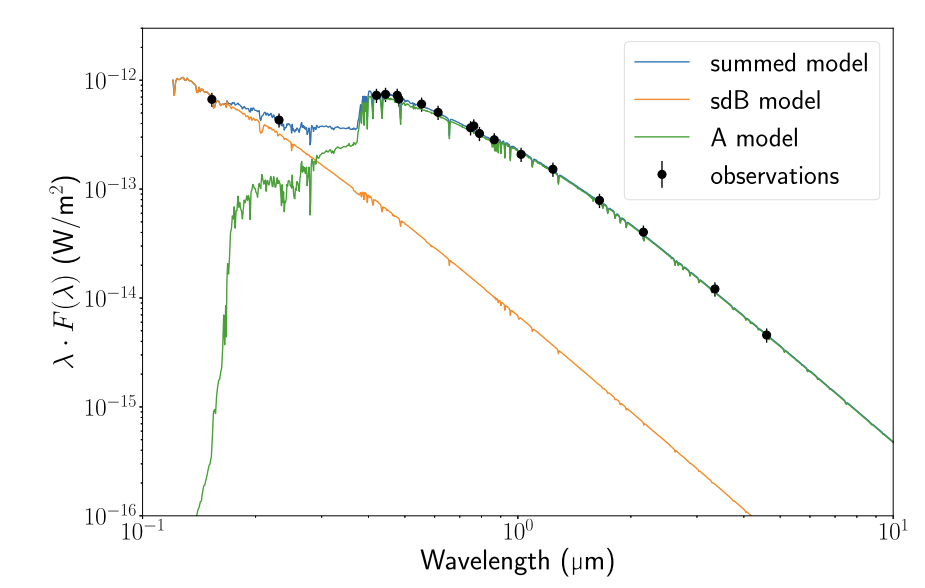Oblique Pulsators
on the hunt for roAp stars and TTPs
TESS’s 2-minute and 20-s cadence light curves are invaluable for asteroseismology. TESS has facilitated the discovery of a new type of pulsating star in a binary, wherein the gravitational field of the companion pulls the pulsations in line with the tidal axis of the binary. The observational signatures of this include pulsation modes split by the orbital frequency that occur at the same ``echelle phase’’ (pulsation frequency mod orbital frequency, normalized to the orbital frequency).
I’ve developed a pipeline that searches the 2-minute and 20-s cadence data for these stars, and we’ve found over 50 examples of these stars. I led the discovery paper of the first evolved tidally tilted pulsator, in an subdwarf B-white dwarf binary that is a Type Ia supernova progenitor. This pipeline also discovered the first ‘‘tri-axial’’ pulsator, and has been instrumental in searches for other stars that don’t necessarily fit established asteroseismic models (e.g., HD 42477).
My pipeline has also been able to identify a unique long-period sdB-delta Scuti binary. In the discovery paper, we propose a novel evolutionary pathway for these long-period binaries that can explain these observations, and allows for intermediate-period sdB stars in binaries.

